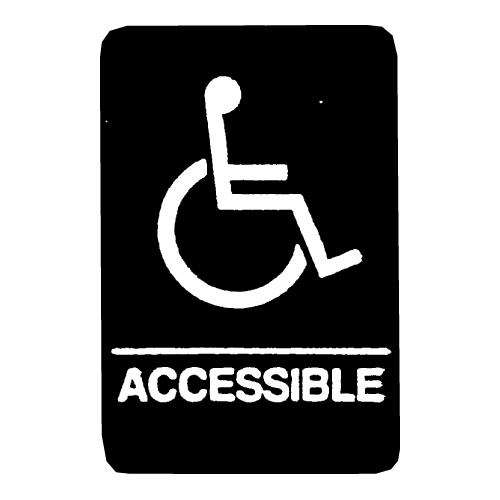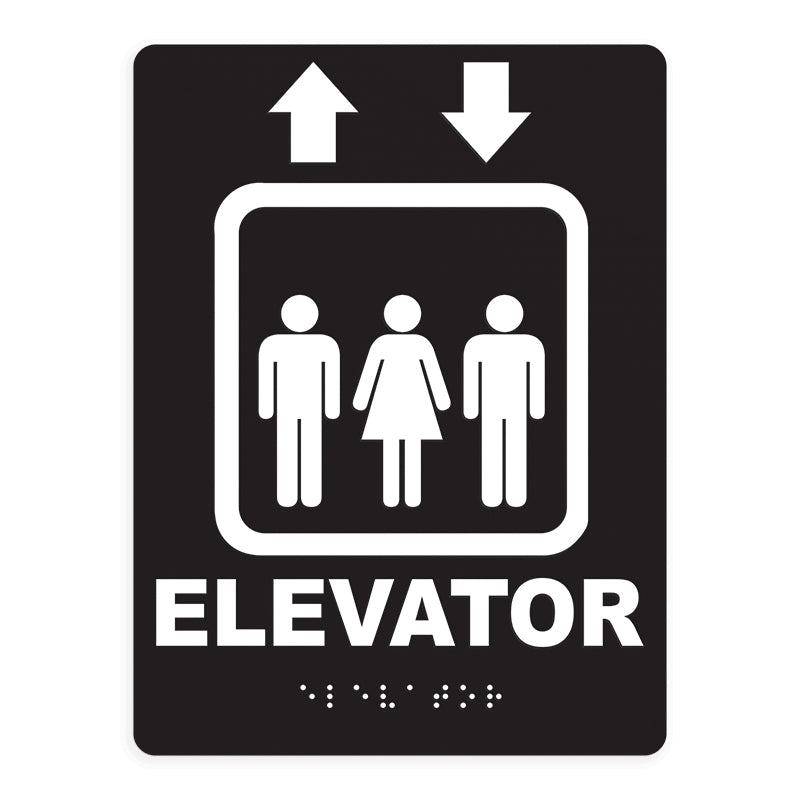Checking Out Imaginative Designs for Reliable ADA Signs
Checking Out Imaginative Designs for Reliable ADA Signs
Blog Article
Discovering the Secret Attributes of ADA Indications for Improved Ease Of Access
In the realm of accessibility, ADA signs serve as silent yet powerful allies, making certain that rooms are accessible and inclusive for individuals with impairments. By incorporating Braille and responsive aspects, these signs break barriers for the visually damaged, while high-contrast color systems and clear typefaces cater to diverse aesthetic needs.
Value of ADA Conformity
Making certain conformity with the Americans with Disabilities Act (ADA) is crucial for promoting inclusivity and equal gain access to in public areas and work environments. The ADA, established in 1990, mandates that all public facilities, companies, and transport solutions accommodate people with disabilities, guaranteeing they enjoy the exact same legal rights and opportunities as others. Conformity with ADA criteria not just fulfills lawful obligations yet also improves an organization's reputation by demonstrating its commitment to variety and inclusivity.
One of the key aspects of ADA compliance is the application of accessible signs. ADA indications are developed to make certain that individuals with handicaps can conveniently navigate via buildings and rooms. These indicators need to follow particular standards relating to size, font, shade contrast, and placement to assure exposure and readability for all. Appropriately executed ADA signage helps get rid of obstacles that people with specials needs frequently encounter, therefore promoting their freedom and confidence (ADA Signs).
Moreover, sticking to ADA laws can reduce the risk of lawful consequences and potential fines. Organizations that fail to follow ADA guidelines may encounter suits or charges, which can be both destructive and monetarily burdensome to their public picture. Therefore, ADA compliance is essential to promoting an equitable setting for every person.
Braille and Tactile Aspects
The unification of Braille and tactile aspects right into ADA signage embodies the concepts of access and inclusivity. It is normally put under the corresponding text on signs to guarantee that individuals can access the information without aesthetic help.
Responsive components expand beyond Braille and include elevated personalities and symbols. These components are made to be noticeable by touch, allowing people to recognize area numbers, toilets, leaves, and various other essential areas. The ADA sets particular guidelines concerning the size, spacing, and placement of these tactile components to optimize readability and ensure consistency throughout different environments.

High-Contrast Color Pattern
High-contrast color design play a critical duty in enhancing the presence and readability of ADA signage for individuals with visual impairments. These plans are necessary as they make best use of the distinction in light reflectance in between text and history, making certain that indicators are quickly noticeable, also from a range. The Americans with Disabilities Act (ADA) mandates using details shade contrasts to suit those with restricted vision, making it an important aspect of conformity.
The efficiency of high-contrast colors depends on their capacity to stand out in numerous lights conditions, consisting of dimly lit atmospheres and locations with glow. Generally, dark message on a light history or light message on a dark great post to read history is employed to attain ideal contrast. As an example, black text on a white or yellow background supplies a raw visual difference that assists in fast recognition and understanding.

Legible Fonts and Text Size
When taking into consideration the style of ADA signage, the selection of clear fonts and ideal message size can not be overemphasized. These elements are critical for making sure that signs come to individuals with visual problems. The Americans with Disabilities Act (ADA) mandates that fonts have to be not italic and sans-serif, oblique, manuscript, very ornamental, or of unusual form. These demands aid make certain that the text is conveniently legible from a distance which the characters are distinguishable to varied target markets.
The size of the message also plays a pivotal duty in accessibility. According to ADA standards, the minimum message height ought to be 5/8 inch, and it must raise proportionally with checking out range. This is especially crucial in public areas where signage needs to be reviewed quickly and properly. Uniformity in text dimension adds to a cohesive image source aesthetic experience, assisting people in browsing settings successfully.
Furthermore, spacing between letters and lines is important to clarity. Appropriate spacing protects against characters from appearing crowded, enhancing readability. By sticking to these standards, designers can substantially enhance availability, guaranteeing that signage serves its desired purpose for all individuals, despite their aesthetic capabilities.
Effective Positioning Techniques
Strategic placement of ADA signage is necessary for maximizing ease of access and guaranteeing conformity with lawful standards. ADA guidelines specify that indicators should be installed at a height in between 48 to 60 inches from the ground to ensure they are within the line of view for both standing and seated people.
Additionally, signs should be placed surrounding to the lock side of doors to allow easy recognition prior to entrance. Uniformity in sign positioning throughout a center improves predictability, reducing complication and boosting total individual experience.

Verdict
ADA signs play an important role in promoting accessibility by incorporating features that attend to the needs of individuals with disabilities. These elements collectively cultivate a comprehensive atmosphere, emphasizing the significance of ADA compliance in making certain equivalent access for all.
In the realm of availability, ADA signs serve as quiet yet powerful allies, making sure that rooms are comprehensive and navigable for people with handicaps. The ADA, enacted in 1990, mandates that all public facilities, companies, and transportation solutions fit people with specials needs, guaranteeing they appreciate the same civil liberties and his explanation chances as others. ADA Signs. ADA indications are created to make certain that people with disabilities can easily navigate with spaces and buildings. ADA guidelines specify that signs need to be placed at a height in between 48 to 60 inches from the ground to guarantee they are within the line of view for both standing and seated people.ADA indicators play an important duty in promoting access by integrating functions that resolve the requirements of people with handicaps
Report this page